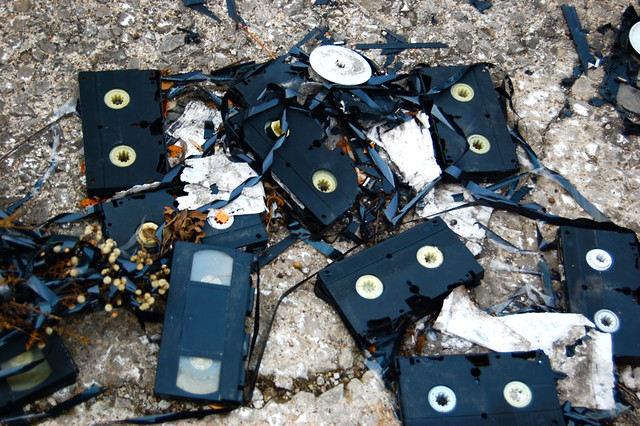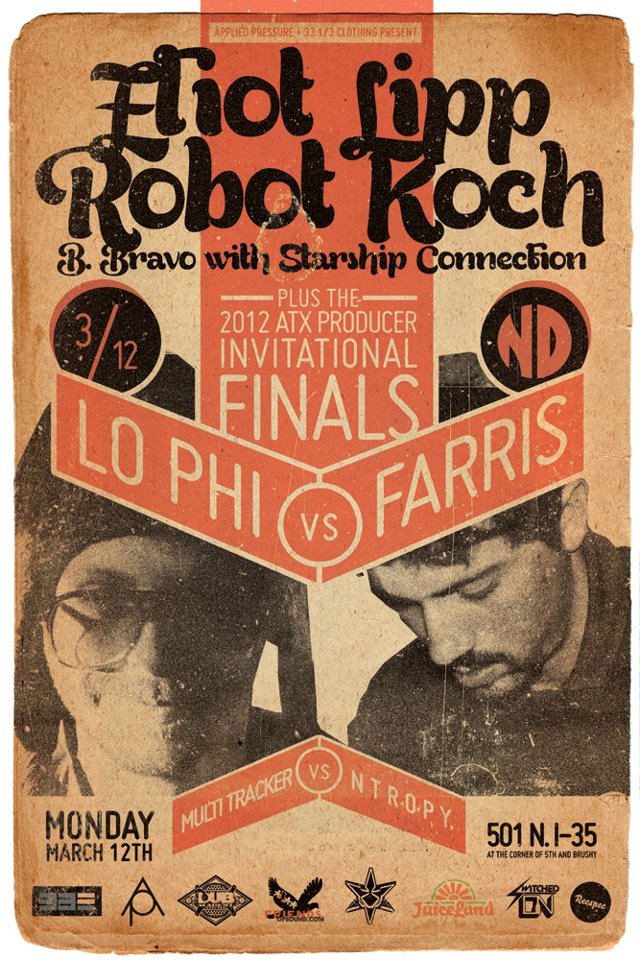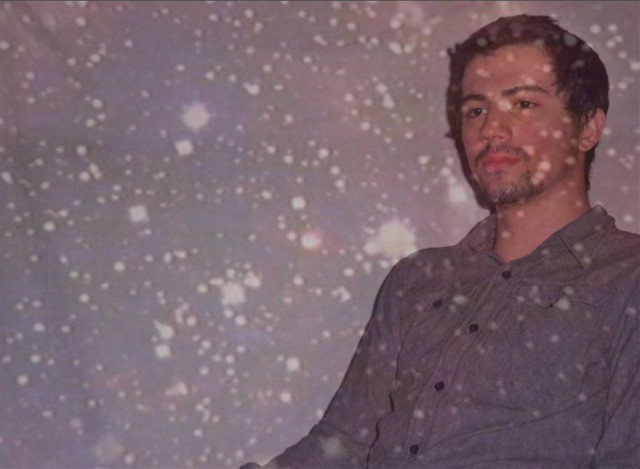
What happens as music peers through the gauze of memory? Our contributor Matt Earp asks that question with the second installment of the new series, CREATED, a column that examines new and undiscovered music and feeds our headphones through the week.
There’s a production technique in a lot of today’s post-FlyLo, beat-driven instrumental hip-hop that’s pretty darn pervasive when you start listening out for it. It’s that woozy, wobbling 80s synth sound – both pads and arpeggios – that once were clear and pristine but have been softened and weathered by time. It’s not just straight recreations of Vangelis or Tiffany, but those sounds as we hear them today – warped, foggy, distorted, heard on tape that’s been physically stretched – the 80s seen through the lens of time. It’s not your Madonna or Michael Jackson cassette as it was when you first bought it (that is, you readers over 30), but that tape as it sounds now, having sat through 25+ summers in the glove compartment of your IROC-Z, pulled out and played again in all its warped glory. It’s the sound of countless TV shows and commercials dubbed and redubbed from VHS to VHS, traded between friends, losing fidelity but gaining character at each interval. Personalized. Distorted with memory. Decaying but well-loved.
This style doesn’t have a name that I’m aware of and it doesn’t really have a progenitor, although Boards of Canada get name-checked by producers I’ve talked to more than anyone. But BOC call more on 70s-era memories (the era of their youth) – filmstrips, 8 tracks, The Electric Company and Richard Nixon. This stuff is firmly rooted in the 80s and early 90s – VHS, cassettes, 3-2-1 Contact and Margaret Thatcher. And TONS of people are doing it. Oneohtrix Point Never (and his dozen other guises). Com Truise. Salem. Kyle Hall. Lone. Space Dimension Controller. Toro y Moi. A lot of those bands are also associated with Chillwave. But Chillwave is a little more crisp and singer-songwriter-y. This style is more instrumental, hip-hop driven, and has intentionally-warped sound elements and heavy muffling envelopes added to the lo-fi synths. When it’s done well, it’s one of the more exciting sounds of today’s electronic music, and I’ll take a stab at coining a new phrase for it – VHSwave. That plants it firmly in the 80s, evokes the sense of the stretched tape, and touches on the fact lots of these artists are also make videos for their creations, usually out of a warped pastiche of strange 80s visual flotsam and jetsam.
For a TON of this stuff, check out Outlier Recordings, especially their voluminous Outsourced compilations. For even weirder sounds and concepts, look to New Dreams Limited, which seems to have some connection to Oneohtrix — but who can say? Fat Dudes is the pictorial companion of VHSwave, and is run by Astro Nautico‘s Paul Jones. And for a far more thought-out investigation into all things retro, check Simon Reynold’s book Retromania.
JACOB 2-2
Jacob 2-2 is a Brooklyn-based sound and video artist who takes his name from an obscure, late-70s movie about a fearless kid investigator. “It’s probably one of the weirdest things I’ve ever seen,” says the producer, whose first name is David but who prefers not to give his last name. It makes total sense when you listen to his music: there’s a kid-like wonder to it, crossed with a dose of playful humor and an bunch of weird 80s synths. It’s a lot like Look Around You condensed into musical form.
David’s prized possession is an old Roland Juno 6. That particular Juno has no presets at all, so every time he gets something he likes he has to record it immediately. “I always think to myself, ‘I’d better record it now or else I’ll never be able to recreate it.'” Its warm sound in turn drives his beats and effects, filled with pings and blips that could be straight from any 80s video game. Sometimes his beats are muffled, while at other times they shine through clearly.
So far, David has put out three EPs, two self-released through his Bandcamp: (The Gifted Child and Cabazon). His most recent EP, Fantasiarexia, was picked up by Jakub Alexander of Moodgadget. He’s also had a couple compilation releases and a handful of remixes for Aleph, Starfawn, Macka and others. (You can listen to all of them on his SoundCloud page.) A motion graphic designer by trade, David also makes his own videos for his live show, performing against a background of material loosely cut together to his music and full of weird and wonderful nostalgia and color.
“There’s a difference between nostalgia and kitch” David says, “And with my stuff it’s not about recreating what we had or were when we were children, it’s more about the idea of being a kid.” But he might take issue with my labeling his work VHSwave – born as he was in the late 70s, “my family had a huge Betamax collection when I was growing up.” So perhaps for Jacob 2-2 it’s actually BetaWave.
STEPHEN FARRIS
Flash forward a dozen years, and you arrive at the birth of today’s other subject, the prolific Stephen Farris. Half a generation younger than Jacob 2-2, Farris has arrived at a similar sound more by general osmosis of nostalgia through the Internet than by actual memories of the 80s, of which he has none.
A lot of his stuff, though not all, is more influenced by traditional hip-hop than Jacob 2-2 – including its more mellow and jazzy side. It’s not really surprising, though, since he’s from Houston – a city that’s been known for a melted and laid-back approach to hip-hop for two decades. Farris’s stuff is a little bit more upbeat than a lot of Screwed stuff, but he’s also influenced by the Chopped aspect of Houston hip-hop, integrating that genre’s effect of messing with and repeating vocals and samples. Strange cut-ups pop up all through his work and create some of its funnest moments.
“I got into making music my freshman year of high-school, when I got a copy of Fruity Loops 5 and this book Circuit Bending: Build your own Alien Instruments,” he says. From there, Farris started going to Goodwill stores and poking around online to find old Casio keyboards he could hack into new forms, though he does count a Juno 106 among his possessions (seems like the Juno is the synth of choice for VHSwave). For a while he was making music with an MC in a group called Ghost Mountain, but for the past couple years he’s mostly been a solo producer. Almost all of his music is available from his Bandcamp page – and apart from a few remixes and compilation appearances, he’s entirely self-released. He name-checks a lot of fellow producers that he either admires or has plans to collaborate with, like ntropy, Sound Founder, Brock Berrigan and VHS Head, but he is also a bit of a lone wolf. “I don’t really collaborate well,” Farris laughs. “If you ask me to do something or if you want a certain part to sound a certain way, that’s probably not what you’re going to end up with.”

Farris ends up playing in Austin quite a bit with fellow beat-heads in the Exploded Drawing collective. He’s also reached the final round of the Applied Pressure producers’ battle that will be held the first night of SXSW. He’ll be battling Lo Phi at a show that also includes beat-meisters Elliot Lipp, Robot Koch, and B. Bravo. Farris also does the videos for his own works, cutting together elements from his huge library of clips with Adobe Premier. And just so you know he’s no joke in the world of VHSwave sound, if you order it Farris will actually make you a copy on, on VHS, of his Cosmic Sound II album and send it out to you along with your download. “It’s pretty trippy though, I’m not sure I could watch it all the way through” he says. The first 5 minutes are below, and Farris reckons he’s made about 80 so far.
Kid Kameleon is a San Francisco-based DJ, promoter, writer, blogger, historian, archivist, and fan of electronic music.
http://kidkameleon.com
